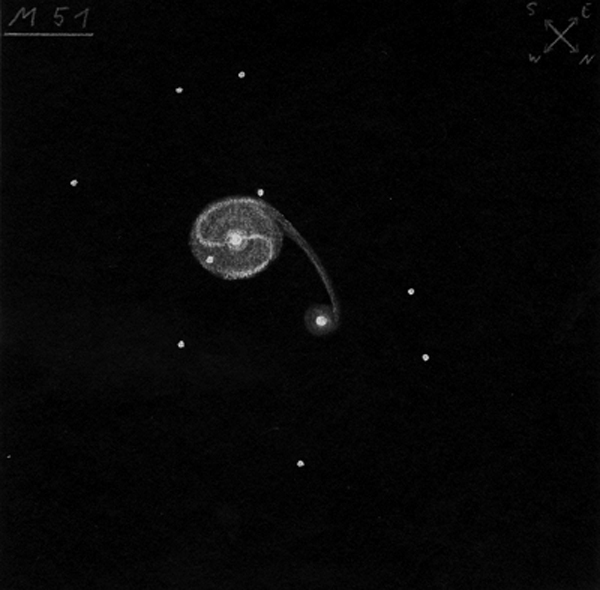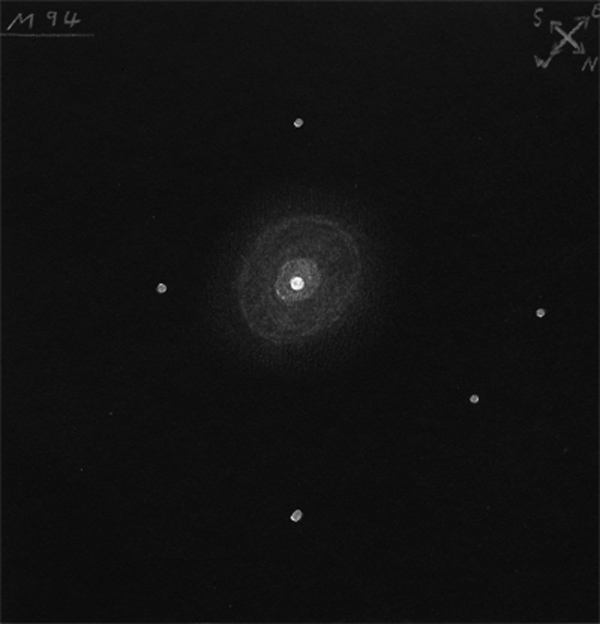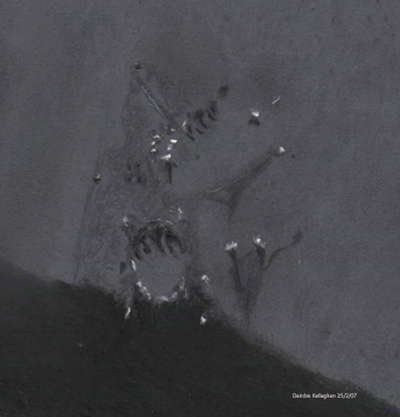
Object: Messier 51, The Whirlpool Galaxy
Classification: Galaxy
Position: RA 13h 29.9 min, DEC 47° 12′
Distance: ~23 million light years
Visual Brightness: 8m4
Apparent Dimension: 11′ x 7′
Constellation: Canes venatici
Observing Location: Erbendorf, Steinwald, Bavaria, Germany (800 meters
above sea level)
NELM: 6m2
Seeing: II / VI
Transparency: I-II / VI
Date: March 15, 2007
Instrument: Dobsonian 8″ f/6
Eyepiece: Reese 9mm Super Wide Angle
Magnification: 133x
Sketching Materials: black cardboard, white pastels, white ink, blending stump
A lot of work and patience went into the above drawing of M 51 to bring out as much detail and structure as possible: after one hour of dark adaption, another hour of pure observing and one more hour of sketching was invested, to get a glimpse of the subtle dark and light structures inside the diffuse nebulosity, which is generated by the object. At a first look, two blurry, bright smudges appear in the eyepiece, which can each be separated into a bright, almost stellar core surrounded by a diffuse, somewhat less brighter halo. It becomes apparent that the two objects are not located directly next to each other, but that there is a somewhat darker area in between, which is suddenly “cut off” by a brighter region in the east: the “bridge” of matter connecting the two galaxies! Inside M 51 A two slightly brighter regions start to appear, which bend away from the core and “dissolve” in the galactic disc: a hint of the spiral structure! Finally, two faint stars can be observed, which are apparently located East and West of the core, they are supposedly stars in the foreground. It may be noted here that the detail depicted in the drawing is the result of many hours of observation and patient use of averted vision, resulting in some sort of “sum picture”, which is surely not visible at a first glance. The beginner may be completely satisfied, if he can recognize the two discs and their cores – all the other details will appear with constant and regular observing.
Sebastian Lehner





